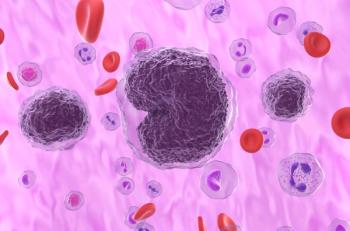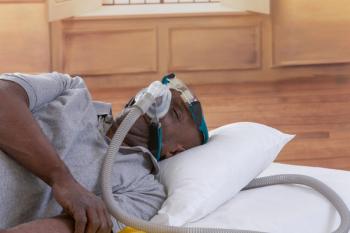
COVID-19 Mortality Risk More Than Doubled Among Homeless Patients
A cross-sectional study showed that patients experiencing homelessness were at more than 2-fold greater age-adjusted mortality risk due to COVID-19 compared with the general population, with these increased risks observed across race/ethnicity and sex status.
Patients experiencing homelessness (PEH) are at more than 2-fold greater age-adjusted mortality risk due to COVID-19 compared with the general population, according to study findings published today in
Homelessness has been shown to disproportionately affect populations who face health disparities, and it can result in the early onset of geriatric conditions and overall decreased life expectancy.
Researchers note that concerns around such accelerated aging led to successful calls for federal funding to protect PEH from COVID-19 exposure by placing these patients into protective housing programs, reducing shelter density, conducting COVID-19 case detection, and increasing vaccination priority for PEH.
Although there is hope that these interventions would result in COVID-19 having no worse outcomes in PEH than the general population, several studies have offered clues, albeit with insufficient evidence, that PEH have experienced elevated age-specific mortality risks due to COVID-19.
Researchers conducted a cross-sectional analysis to further assess the precise age-standardized mortality rate (ASMR) ratios for COVID-19 infection among PEH vs the general population overall and by sex and race and ethnicity. Recruited patients were from Los Angeles County, California, which is home to 10% of the US PEH population and the largest unsheltered population. PEH status was determined using the US Department of Housing and Urban Development definitions for homelessness at the time of COVID-19 diagnosis or symptom onset.
For the analysis, crude and age-specific COVID-19 mortality rates per 100,000 people were calculated using 5-year age groups and standardized mortality ratios for PEH and the general population 25 years and older, assessing differences by race and ethnicity and sex, from January 1, 2020, to November 1, 2021.
The primary outcome examined was COVID-19 deaths sourced from clinician reports, death certificates, medical examiner reports, and vital records deaths.
“Mortality and population estimates came from COVID-19 mandatory case reporting conducted by the Los Angeles County Department of Public Health, the annual point-in-time homeless count, and the US Census,” they explained.
A total of 52,015 PEH and 6,382,402 individuals from the general population were included in the analysis, of whom 29.9% (n = 15,539) and 9.3% (n = 591,003) were Black, 34.7% (n = 18,057) and 44.7% (n = 2,854,842) were Hispanic, 28.6% (n = 14,871) and 52.2% (n = 3,329,765) were female, 71.3% (n = 37,007) and 47.8% (n = 3,052,637) were male, and 6.5% (n = 3380) and 18.7% (n = 1,190,979) were 65 years or older, respectively.
From the study cohort, 25,441 deaths occurred among general population individuals and 256 deaths occurred among PEH. Crude death rates were 0.49% for PEH and 0.40% for the general population.
After accounting for age, PEH were associated with a 2.35 (95% CI, 2.08- 2.66) times higher age-adjusted risk of COVID-19–associated mortality than the general population, with ASMRs of 880 (95% CI, 715-1046) per 100,000 among PEH and 392 (95% CI, 387-396) per 100,000 among the general population reported. Within the PEH population, Hispanic individuals experienced the highest ASMR at 1450 (95% CI, 1063-1837) deaths per 100,000.
Furthermore, significantly higher risk of COVID-19–associated mortality among PEH compared with the general population were shown for Black PEH (RR, 1.69; 95% CI, 1.31-2.18), Hispanic PEH (RR, 2.34; 95% CI, 1.96-2.79), White PEH (RR, 8.33; 95% CI, 6.37-10.88), female PEH (RR, 3.39; 95% CI, 2.56-4.48), and male PEH (RR, 1.74; 95% CI, 1.52-2.00).
The high within-group risk observed for White individuals was noted to be associated with the low mortality rate among White people in the general population who, compared with other racial and ethnic groups, experienced lower mortality rates at all ages.
Researchers said that insufficient counts limited their ability to include other racial and ethnic groups and genders (ie, transgender, Asian PEH) or to test 3-way intersections between race and ethnicity, sex, and PEH status.
“More aggressive housing and homelessness prevention interventions are needed to mitigate the consequences of COVID-19 and other housing sensitive conditions,” they concluded.
Reference
Porter NAC, Brosnan HK, Chang AH, Henwood BF, Kuhn R. Race and ethnicity and sex variation in COVID-19 mortality risks among adults experiencing homelessness in Los Angeles County, California. JAMA Netw Open. 2022;5(12):e2245263. doi:10.1001/jamanetworkopen.2022.45263
Newsletter
Stay ahead of policy, cost, and value—subscribe to AJMC for expert insights at the intersection of clinical care and health economics.













































